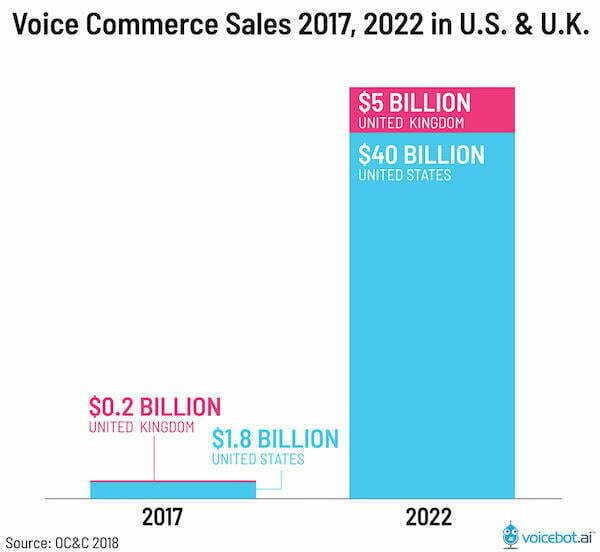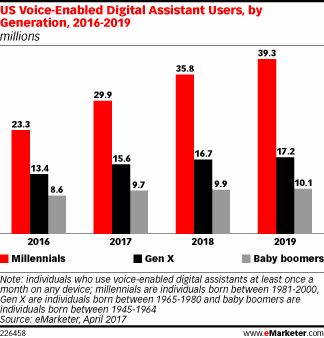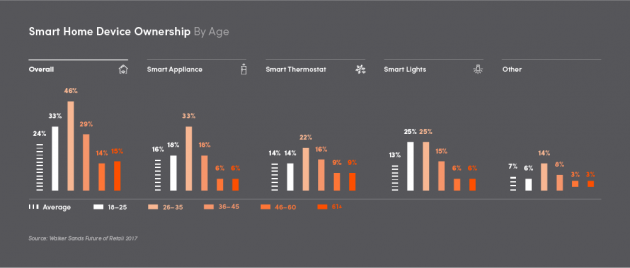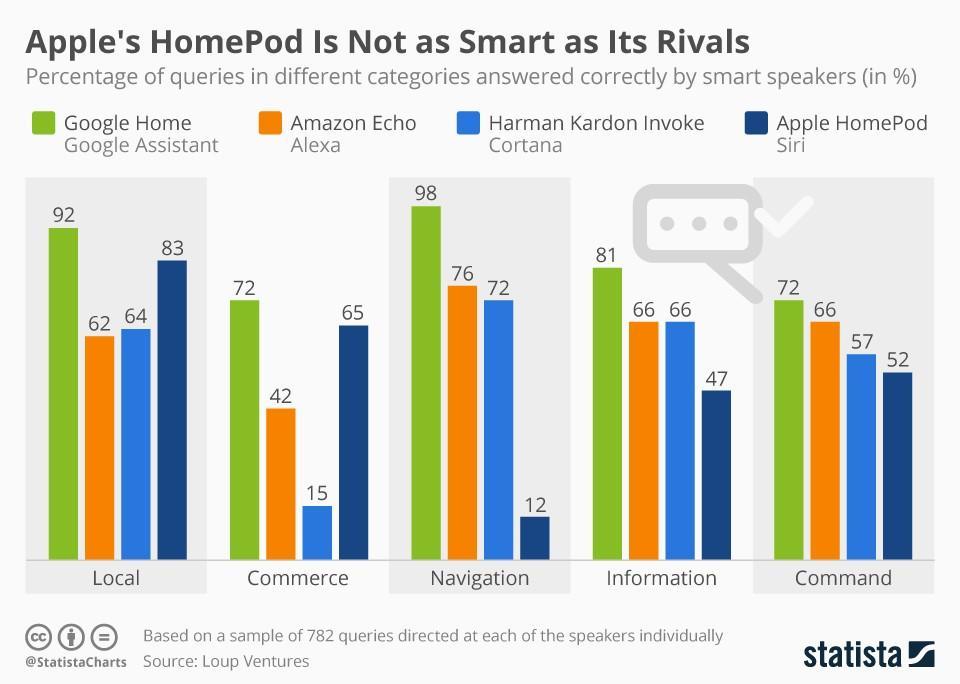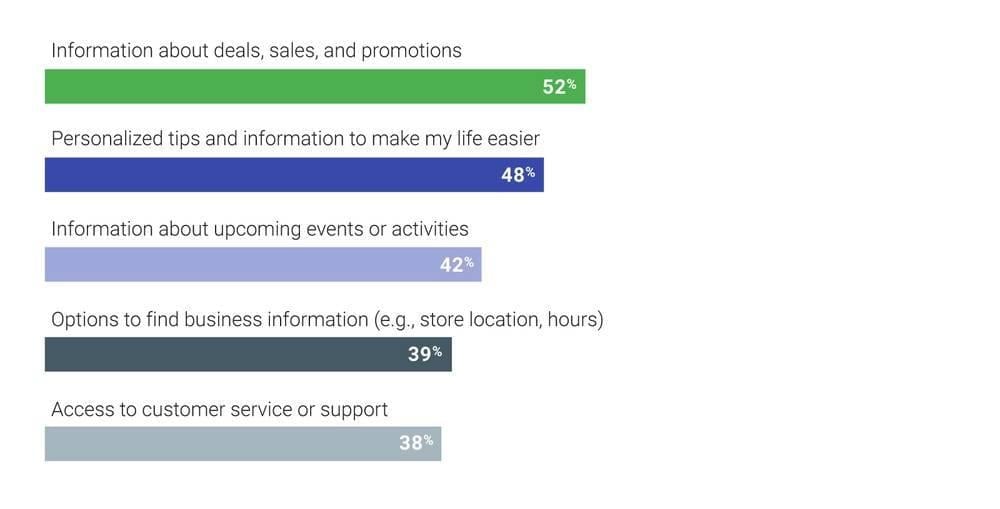
You’ve all heard the postulations. Voice search is the new organic search. Voice search will be the death of SEO. Voice search will seize your house, your assets, and set your dog loose to roam the neighborhood. The hoopla is at an all-time high—but how much of what you’re hearing is data-backed? Here at WordStream, we’re all about the facts. And nothing nails down the facts a movement like cold, hard statistics.
Here are 33 voice search statistics to help you prepare for the voice search revolution.
General Voice Search Statistics
1. 50% of all searches will be voice searches by 2020, per comScore. (Is it even a post about voice search if you don’t lead with this stat??)
2. About 30% of all searches will be done without a screen by 2020, per Gartner.
3. 13% of all households in the United States owned a smart speaker in 2017, per OC&C Strategy Consultants. That number is predicted to rise to 55% by 2022.
4. There will be an estimated 21.4 million smart speakers in the US by 2020, per Activate.
5. The voice recognition market will be a $601 million industry by 2019, per Technavio.
6. One-in-six Americans (16%) own a voice activated smart-speaker, per Edison Research and NPR.
7. As of January 2018, there were an estimated one billion voice searches per month, per Alpine.AI.
Voice Search Usage Statistics
1. 52% of people keep their voice-activated speakers in their living rooms, per Google. 25% keep them in their bedrooms, while 22% keep them in their kitchens.
2. 35.6 million Americans used a voice-activated assistant device at least once a month in 2017, per eMarketer—a year-over-year increase of 128.9 percent.
3. 1 in 4 shoppers used voice assistants in their holiday shopping during the 2017 season, per CTA.
4. 72% of people who own voice-activated speakers say that their devices are used as part of their daily routines, per Google.
5. Mobile voice-related searches are 3X more likely to be local-based than text-related searches, per Search Engine Watch.
6. 65 percent of people who own an Amazon Echo or Google Home can’t imagine to going back to the days before they had a smart speaker, per GeoMarketing.
7. 41% of people who own a voice-activated speaker say it feels like talking to a friend or another person, per Google.
Voice Search Demographic Statistics
1. 35.8% of millennials use voice-enabled digital assistants at least once a month, per eMarketer; this compared to just 10.1% of baby boomers.
2. The number of millennials who use voice-enabled digital assistants will climb to 39.3% in 2019, per eMarketer.
3. 2 in 5 adults use voice search once daily, per Location World.
4. About 1 in 5 adults use mobile voice search at least once monthly, per Global Web Index.
5. 25% of individuals ages 16-24 use voice search on mobile, per Global Web Index.
6. Individuals ages 26-35 represent the highest percentage of smart home device owners, per Walker Sands.
Voice Search Device Statistics
1. 70.6% of Americans who used a voice-enabled speaker at least once a month in 2017 used an Amazon Echo, per eMarketer. 23.8% used a Google Home.
2. Voice search accounts for 25% of searches conducted on Windows 10 taskbar, per Purna Virji of Microsoft.
3. The Echo Dot was the best-selling product on all of Amazon in the 2018 holiday season, per Techcrunch.
4. Amazon and Google account for 94% of all smart speakers in use, per Strategy Analytics.
5. Google Assistant is now available on more than 400 million devices, per Google.
6. 82 percent of Amazon Echo smart speaker owners subscribe to Amazon Prime, per GeoMarketing.
7. While the Apple HomePod understands 99.4 percent of all queries, it only answers 52.3 percent correctly, putting it behind Amazon Echo (64%), Google Home (81%), and Harman Kardon Invoke (57%) in that regard, per Loup Ventures.
Voice Commerce Statistics
1. Voice commerce sales reached $1.8 billion last year, per OC&C Strategy Consultants. They’re predicted to reach $40 billion by 2022.
2. 22% of U.S. smart speaker owners have purchased something using their devices, per Edison Research.
3. 5% of consumers use voice shopping, but that number could reach 50% by 2022, per MoffettNathanson.
4. Grocery shopping accounted for 20% of voice shopping in 2017, per OC&C Strategy Consultants. This compared to clothes shopping, which accounted for just 8%.
5. 52% of voice-activated speaker owners would like to receive information about deals, sales, and promotions from brands, per Google. 39% would like to receive options to find business information.
6. One in five consumers (19%) have made a voice purchase through Amazon Echo or another digital home assistant, and another third (33 percent) plan to do so in the next year, per Walker Sands.
Viva la revolución!
You know what they say: adapt or die! The voice search craze has taken on sort of a life of its own in the past two or three years. Still, the statistics tell the story. We are rapidly approaching 2020—the year now infamously predicted by comScore to mark 50% voice search adoption. Across the board, in fact, the industry seems to be predicting 2020 as the year voice search truly explodes. Use these 33 stats to start visualizing the way your brand can take advantage of this ubiquitous trend.
Want more marketing stats? Check out these 11 Legitimately Scary PPC Stats Every Advertiser Should Know

